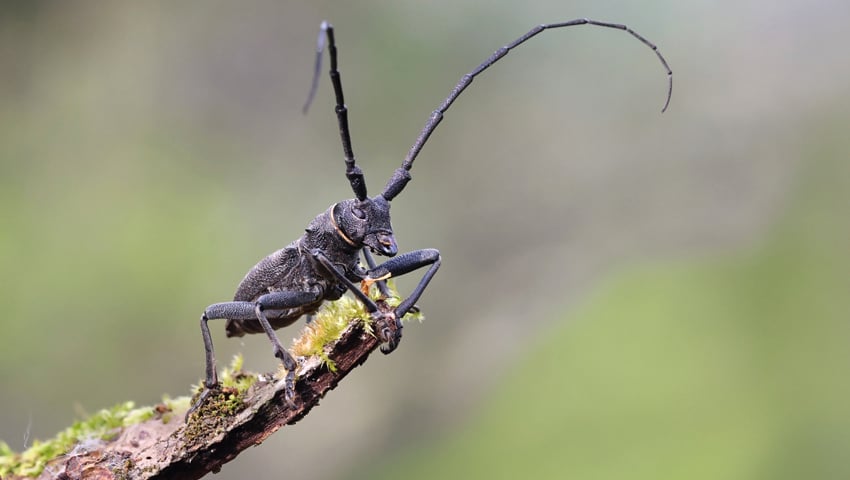A ground-breaking meta-analysis led by BC3 researchers has shed new light on the impact of climate change on invertebrates living in forest soils. Published in the journal Global Change Biology, the study is the largest of its kind to date, using data from 46 forests worldwide, to fill critical knowledge gaps about how changes in rainfall impact these vital ecosystems.
Soils are home to an astonishing 430 million species, more than half of all species found on earth: 90% of the world’s fungi, 85% of plants and more than 50% of bacteria – and 59% of life overall. While we know a lot about how threats like climate change affect biodiversity aboveground, little is known about how they affect animals in the soil.
The new study led by BC3 researchers as part of the EU-funded project HoliSoils, sheds light on this, by examining the impacts of changes in rainfall on soil invertebrates.
Results show that droughts reduce the abundance of soil invertebrates by around 35%, while increases in rainfall lead to increases of a similar magnitude. Additionally, the impact of drought was not the same for all invertebrates: impacts were more severe for groups like springtails and mites than for tiny invertebrates like nematodes, or larger groups like beetles. This means that the species that are most affected include many species which help to improve soil health by eating dead leaves and incorporating this organic material into the soil. According to the researchers, the relationship between body size and response to precipitation uncovered in this study has profound implications for predicting future responses of soil biodiversity to climate change.
Phil Martin, BC3 researcher and lead author of the study, said, “Our findings will help us predict future responses of soil invertebrates to climate change more accurately, as well as the potential consequences of this on soil functioning and health. In the long term, these changes could potentially threaten forest health and their ability to provide ecosystem services like nutrient cycling.”
The differences in the response of different invertebrate groups are probably the result of two factors: diet and physical adaptations. According to the study, many of the species most affected by drought feed on plant roots, dead leaves, or fungi and bacteria in the soils – all of which can be reduced by drought. At the same time, mites and springtails are less able than beetles to move and find areas within forests that are moister and so are more at risk of drying out.
Mathieu Santonja, Associate professor at Aix Marseille University and co-author of the study, said, “Soil moisture is a key limiting factor for soil fauna, and over time these animals evolved a wide range of ecological, morphological and physiological adaptations to specific precipitation regimes. However, the large changes in precipitation regimes that we are currently experiencing cause both direct and indirect effects on soil fauna, as some of them become less adapted to altered food resources or more susceptible to predation.”
Results suggest that soil invertebrates in different regions could be affected differently. Forests in regions experiencing increased droughts, like southern Europe and Central America, will likely see decreases in soil invertebrates. Conversely, regions with increasing rainfall, such as northern Europe and North America, may see an increase in these populations. Thus, researchers urge decision-makers to take the threats to forest soils seriously and to fund and promote adaptations to current management practices.
Jorge Curiel, Ikerbasque Professor at BC3 and co-author of the study, said, “Most of the experiments we used for this study were small and short-term. Given these limitations, it is still too soon to say if the effects of drought on soil fauna are irreversible or not and to what extent they will affect the soil’s capacity to sequester carbon. We need larger and longer studies to see how soil fauna will adapt to new climatic conditions.”
The meta-analysis demonstrates that most experimental manipulations of precipitation are more aligned with predicted extreme climatic events rather than average annual changes, which may not accurately represent real-world conditions. It was noted that experimental plots used in these studies were often too small to capture the full extent of changes for mobile taxa, suggesting a need for larger plot sizes in future research. These insights show the need for the development of more realistic mechanistic soil models, which are crucial for simulating soil responses to global change.
This study is the largest and most robust of this kind to date, confirming the impacts of changes in rainfall on soil invertebrates as well as suggesting potential impacts on nutrient cycling. However, further research is needed to link these changes in soil invertebrates with changes in soil health.
